TS
boleroes11
Hand grenade cumulative GSC - 3.
Hand grenade cumulative GSC-3
May 23, 2014

In the early seventies the soldiers of the Soviet Army got a new weapon - the antitank grenade RPG-18 "Fly". This weapon allows you to fight with the enemy armor at ranges up to 200 meters, which greatly improved the combat capabilities of infantry. Before the advent of the "fly" the available range was limited to a pair of grenades tens of meters. The only weapon a soldier fit to combat armored vehicles for some time remained hand grenade cumulative GSC-3.
During the Great Patriotic War, the Red Army actively used antitank grenade RPG-43 and RPG-6. In the late forties designers GSKB-47 (now NPO "Basalt") created a new grenade to combat armored vehicles - RKG-3. This ammunition was intended to destroy tanks and light armored vehicles using a shaped charge. To enhance the combat effectiveness in the design of grenades were used a few interesting technical solutions.
RKG-3 grenade had a total length of 362 mm and a curb weight was 1.07 kg. GSC-3 was a little lighter than previous similar purpose ammunition that allows you to train a soldier to throw it at a distance of 18-20 meters. Due to the relatively short range required to apply the cumulative throw a grenade just out of hiding.

Construction grenades GSC-3 was divided into four main units: body, handle, bursting charge and fuse. Body was actually a grenade warhead and its equipped with an explosive charge. 600-gram charge had cumulative recess with a thin metal liner. The head of the body has been left hollow: on target she was responsible for the formation of a cumulative jet at a desired distance from the obstacle. At the bottom of the housing had a cavity for the fuse and the setting screw-fastening handle. Fuse grenade was a sleeve with primer and an explosive charge, initiating undermining the main charge.
In the handle grenades GSC-3 were placed mechanisms responsible for undermining the main charge and defeat the purpose. On the cylindrical housing of the handle has been provided with a movable spring-loaded coupling threads for the body grenades. Furthermore, on the outer surface of the casing had hinged strip. Through the holes in the handle outward deduced safety pin with the ring. Inside the knobs are striking mechanism, a safety device and a stabilizer. Handle grenades performed sealed to prevent moisture damage to the indoor units.
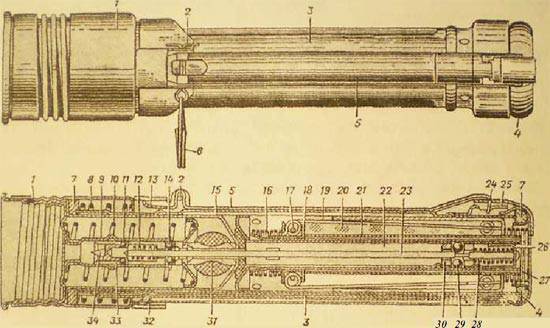
Handle GSC-3: 1. Movable coupling; 2. Safety pin; 3. Handle shell; 4. Hinged cap with strap; 5. Hinged strap; 6. Ring safety checks; 7. Parchment circle; 8. Movable spring clutch; 9. Pipe flange; 10. Kontrpredohranitelnaya spring; 11. The small detent ball (2); 12. Mainspring; 13. The end of the spring hinge plates; 14. Large detent ball (2); 15. The impact mechanism housing; 16. Spring stabilizer; 17. Stabilizer ring; 18. Sleeve stabilizer; 19. The wire pen stabilizer; 20. Stabilizer; 21. Movable tube; 22. The center tube; 23. Rod; 24. Unbent end folding plates; 25. The cuff; 26. The cap; 27. The spring hinged lid; 28. The spring rod; 29. Bead (2); 30. Nipple; 31. Fly-weights; 32. The ball; 33. Impactor housing; 34. Drummer.
Impact mechanism consisted of a cylindrical body with a conical top, combat and kontrpredohranitelnoy spring block impactor and inertial load in the form of a metal ball with a through hole. On target cargo had to squeeze kontrpredohranitelnuyu spring, then drummer with mainspring shifted to the primer. When moving the unit drummer in the forward position the two balls were in the groove of the hammer mechanism and freed. Under the action of the mainspring drummer beat the primer fuse.
In the rear of the handle located stabilizer. Its main element - textile parachute characteristic elongated shape, coupled with springy frame. At some point, the spring-loaded rod flight grenade was thrown away stabilizer, after which it was revealed and pomegranate could complete the flight to the target warhead forward.
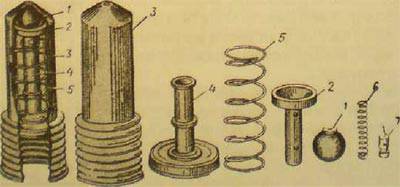
Impact mechanism: 1. Fly-weights; 2. Impactor housing; 3. Impact mechanism housing; 4. Pipe flange; 5. Kontrpredohranitelnaya spring; 6. Mainspring; 7. Drummer.
To avoid accidents, pomegranate GSC-3 immediately received four fuses. First - check with the ring. When preparing to use grenades check blocked displacement of the movable sleeve trims and as a consequence, further work arrangements. Mechanisms second fuse located in the rear handle and protected by a grenade when accidentally dropped. Inertial mechanism of the movable sleeve and several balls were not allowed to work before striking mechanism as a fighter and will make the swing throw a grenade to the target. Turn off this fuse initiated separation flap strap and bottom lid handle. After resetting the cap from the handle was discarded stabilizer.
Third fuse disconnected after the disclosure of the stabilizer and defending fighters from undermining grenades when confronted with obstacles in the early stages of flight. Jerk stabilizer budge special spring-loaded rod, hold the ball and spring.
Functions of the fourth and final fuse performed kontrpredohranitelnaya spring impact mechanism. In flight, it kept oscillating weight and drummer in the rearmost position. On target breakdowns inertial impact mechanism and occurred blasting cumulative charge.

GSC-3 during the flight: 1 - spring stabilizer; 2 - movable tube; 3 - wire feathers; 4 - Cloth cone; 5 - hinged cap with strap; 6 - spring cap.
Preparing to attack enemy vehicles, soldiers had to unscrew the handle grenades into the housing fuse and return the handle in place. Next should pull the pin, do swing and throw a grenade to the target. GSC-3 apply only allowed out of hiding. Immediately after the soldier let grenade handle under spring pressure shifted to the body, freed hinged lid and a bottom bar. Emissions occur off the stabilizer and the third guard.
Under the influence of air flow stabilizer grenade oriented properly, so ammo faced purpose under the direct or an acute angle to the surface. Jet stream is the main charge grenades GSC-3 could punch up to 150 mm of homogeneous armor at an angle of 30 ° to meet the normal. Had shaped charge can reliably hit the then existing roof tanks in the hull and turret.
Hand grenade cumulative GSC-3 entered service in 1950. Given the lack of alternatives to this round quickly enough antitank grenades replaced previous models. With factory housing grenades GSC-3, arms and fuses supplied in wooden boxes, and various units of ammunition packed in individual metal boxes. Soldiers are required to disclose the box and connect the body with the handle grenades. RKG-3 grenades tolerated grenade bags in two pieces. Fuses required to wear separately, pocket bags, pre-wrapped in paper or rags.
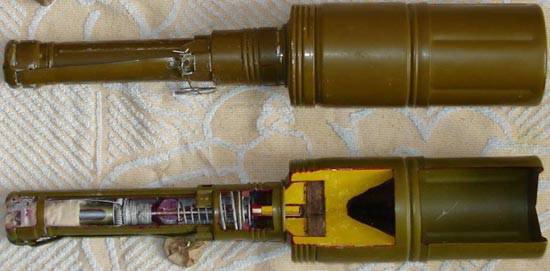
GSC-3E

GSC-3em
A little later two modifications were made grenades - GSC-GSC-3E and the 3rd. The design of these weapons remains the same, just change the shaped charge and manufacturing technologies. Both new copper cladding grenades received cumulative funnel. In addition, developers updated grenades changed shape of a funnel. Thanks refinements pomegranate GSC-3E could punch up to 170 mm homogeneous armor, GSC-the 3rd - up to 220 mm.
For personnel training was developed educational simulation grenade UPG-8. She had the same weight and dimensions as the grenade, but different internal mechanisms. Instead shaped charge housing UPG-8 equipped Barrel simulation fuse and explosive weight simulator. In Barrel placed imitation fuse, consisting of a sleeve, the primer, and wads of black powder charge. Handle training and simulation grenades did not differ from the corresponding unit of ammunition GSC-3.
Hand grenades cumulative GSC-3 used in the Soviet Army until the reactive system RPG-18, and then gradually disappeared from circulation. Soviet-made grenades were delivered to some friendly countries. Yugoslavia has mastered the licensed production of Soviet-designed munitions under its own index of M79. These munitions were widely used during the Yugoslav wars. In the course of armed conflicts pomegranate RKG-3/M79 showed their capabilities and has established itself as a reliable and sufficiently effective antitank weapon. At the same time, the cumulative grenades could be used only for the battles and ambushes in the mountains, aided by a small distance, sufficient to throw.
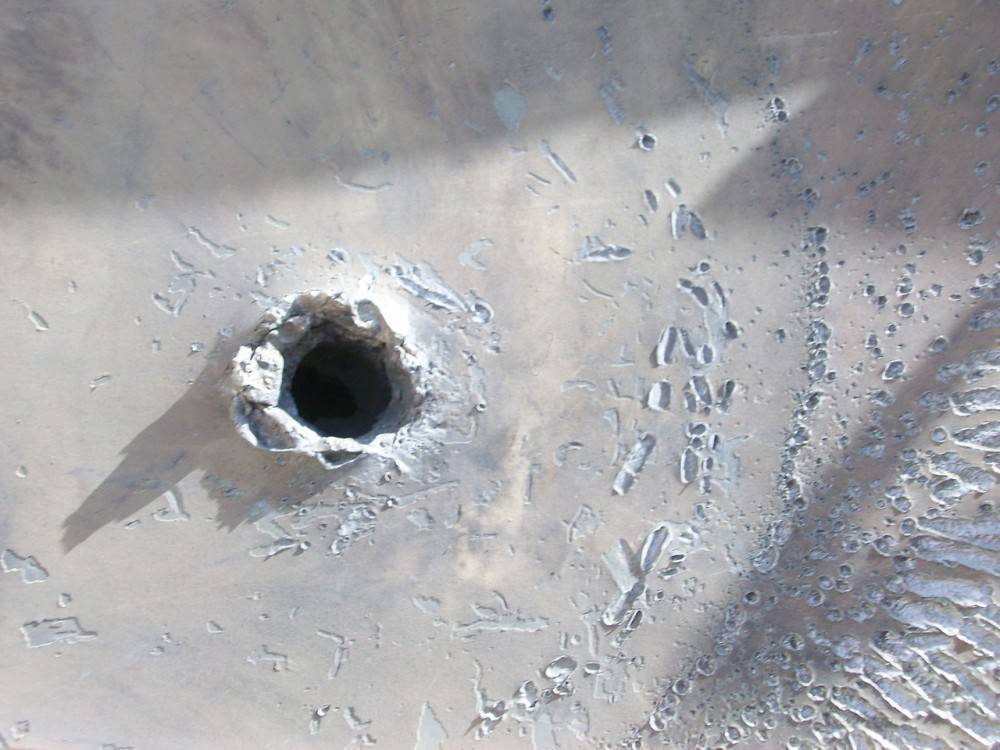

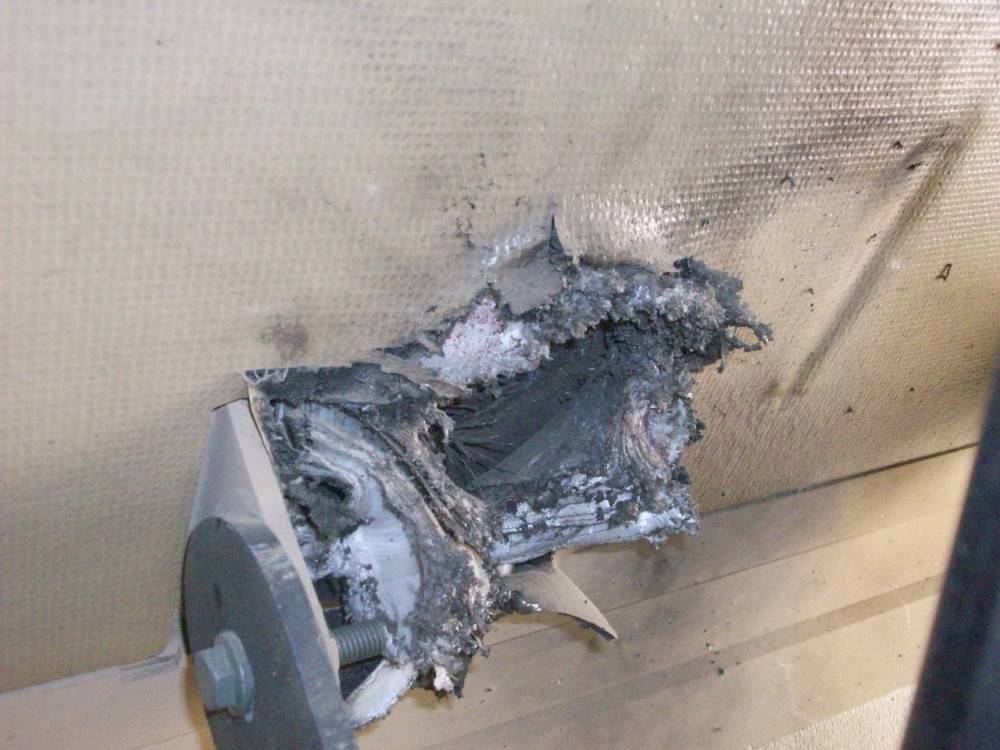
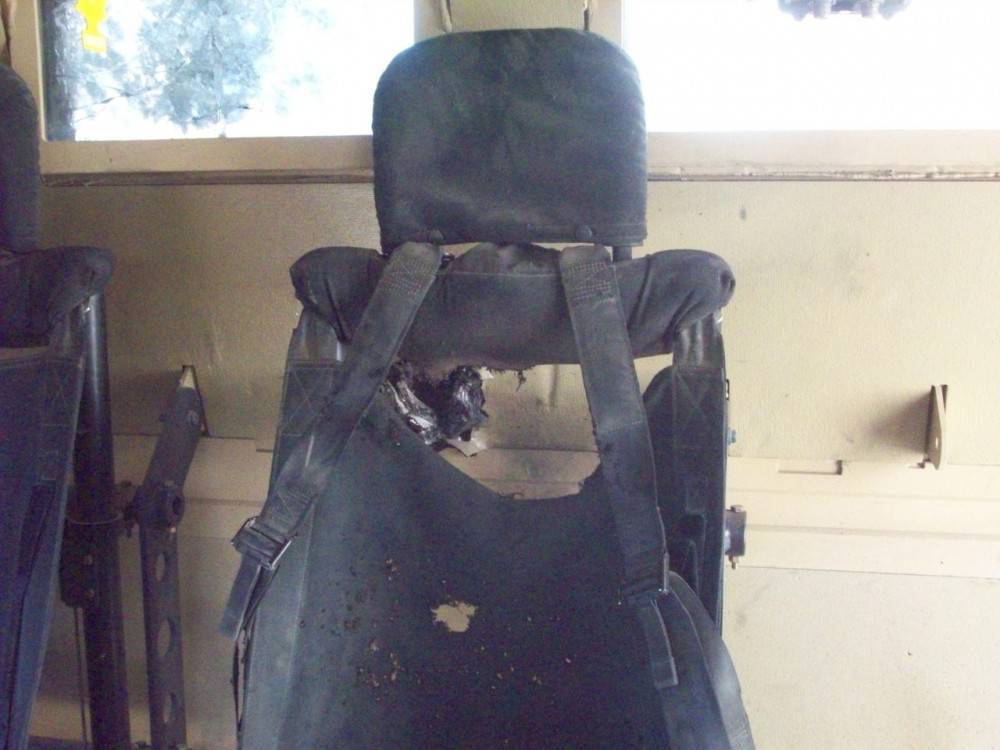
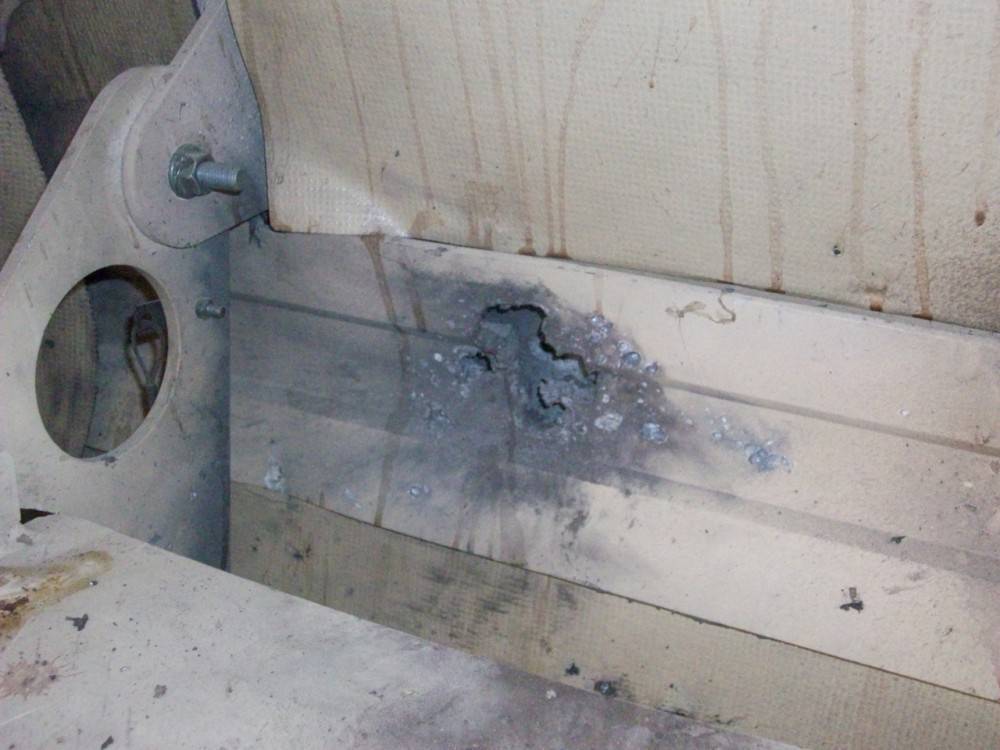
Sumber : Site:
http://spec-naz.org/
http://gunsite.narod.ru/
http://nastavleniya.ru/
http://army.lv/
=================================
Kalau melihat hasil kerjanya, Granat ersebut termasuk sangat bagus dalam hal penetrasi pada lapisan baja ranpur.
Atau karena lapisan baja ranpur tersebut terbuat dari "kaleng - krupuk " seperti ranpur AMX-13 atau PT-76, coba kalau di hantamkan ke lapisan baja MBT mungkin akan lain hasilnya, nggak akan mempan.
Seperti di ketahui, lapisan baja ranpur MBT sangat - sangat lethal dan kuat sakti mandra guna, walau di hajar pakai peluru apapun, MBT tetap lenggang - kangkung, karena lapisan bajanya terbuat dari baja yg sangat ulet, pokok -nya lapisan baja MBT top markotop, anti peluru apapun. !!!!
So, untuk persiapan perang yad, TNI perlu memperbanyak MBT jangan tank-tank ringan yang lapisan bajanya terbuat dari "kaleng - krupuk".
Boleroes 11 yang sangat "gandrung" dengan MBT.
Salam.
May 23, 2014

In the early seventies the soldiers of the Soviet Army got a new weapon - the antitank grenade RPG-18 "Fly". This weapon allows you to fight with the enemy armor at ranges up to 200 meters, which greatly improved the combat capabilities of infantry. Before the advent of the "fly" the available range was limited to a pair of grenades tens of meters. The only weapon a soldier fit to combat armored vehicles for some time remained hand grenade cumulative GSC-3.
During the Great Patriotic War, the Red Army actively used antitank grenade RPG-43 and RPG-6. In the late forties designers GSKB-47 (now NPO "Basalt") created a new grenade to combat armored vehicles - RKG-3. This ammunition was intended to destroy tanks and light armored vehicles using a shaped charge. To enhance the combat effectiveness in the design of grenades were used a few interesting technical solutions.
RKG-3 grenade had a total length of 362 mm and a curb weight was 1.07 kg. GSC-3 was a little lighter than previous similar purpose ammunition that allows you to train a soldier to throw it at a distance of 18-20 meters. Due to the relatively short range required to apply the cumulative throw a grenade just out of hiding.

Construction grenades GSC-3 was divided into four main units: body, handle, bursting charge and fuse. Body was actually a grenade warhead and its equipped with an explosive charge. 600-gram charge had cumulative recess with a thin metal liner. The head of the body has been left hollow: on target she was responsible for the formation of a cumulative jet at a desired distance from the obstacle. At the bottom of the housing had a cavity for the fuse and the setting screw-fastening handle. Fuse grenade was a sleeve with primer and an explosive charge, initiating undermining the main charge.
In the handle grenades GSC-3 were placed mechanisms responsible for undermining the main charge and defeat the purpose. On the cylindrical housing of the handle has been provided with a movable spring-loaded coupling threads for the body grenades. Furthermore, on the outer surface of the casing had hinged strip. Through the holes in the handle outward deduced safety pin with the ring. Inside the knobs are striking mechanism, a safety device and a stabilizer. Handle grenades performed sealed to prevent moisture damage to the indoor units.

Handle GSC-3: 1. Movable coupling; 2. Safety pin; 3. Handle shell; 4. Hinged cap with strap; 5. Hinged strap; 6. Ring safety checks; 7. Parchment circle; 8. Movable spring clutch; 9. Pipe flange; 10. Kontrpredohranitelnaya spring; 11. The small detent ball (2); 12. Mainspring; 13. The end of the spring hinge plates; 14. Large detent ball (2); 15. The impact mechanism housing; 16. Spring stabilizer; 17. Stabilizer ring; 18. Sleeve stabilizer; 19. The wire pen stabilizer; 20. Stabilizer; 21. Movable tube; 22. The center tube; 23. Rod; 24. Unbent end folding plates; 25. The cuff; 26. The cap; 27. The spring hinged lid; 28. The spring rod; 29. Bead (2); 30. Nipple; 31. Fly-weights; 32. The ball; 33. Impactor housing; 34. Drummer.
Impact mechanism consisted of a cylindrical body with a conical top, combat and kontrpredohranitelnoy spring block impactor and inertial load in the form of a metal ball with a through hole. On target cargo had to squeeze kontrpredohranitelnuyu spring, then drummer with mainspring shifted to the primer. When moving the unit drummer in the forward position the two balls were in the groove of the hammer mechanism and freed. Under the action of the mainspring drummer beat the primer fuse.
In the rear of the handle located stabilizer. Its main element - textile parachute characteristic elongated shape, coupled with springy frame. At some point, the spring-loaded rod flight grenade was thrown away stabilizer, after which it was revealed and pomegranate could complete the flight to the target warhead forward.

Impact mechanism: 1. Fly-weights; 2. Impactor housing; 3. Impact mechanism housing; 4. Pipe flange; 5. Kontrpredohranitelnaya spring; 6. Mainspring; 7. Drummer.
To avoid accidents, pomegranate GSC-3 immediately received four fuses. First - check with the ring. When preparing to use grenades check blocked displacement of the movable sleeve trims and as a consequence, further work arrangements. Mechanisms second fuse located in the rear handle and protected by a grenade when accidentally dropped. Inertial mechanism of the movable sleeve and several balls were not allowed to work before striking mechanism as a fighter and will make the swing throw a grenade to the target. Turn off this fuse initiated separation flap strap and bottom lid handle. After resetting the cap from the handle was discarded stabilizer.
Third fuse disconnected after the disclosure of the stabilizer and defending fighters from undermining grenades when confronted with obstacles in the early stages of flight. Jerk stabilizer budge special spring-loaded rod, hold the ball and spring.
Functions of the fourth and final fuse performed kontrpredohranitelnaya spring impact mechanism. In flight, it kept oscillating weight and drummer in the rearmost position. On target breakdowns inertial impact mechanism and occurred blasting cumulative charge.

GSC-3 during the flight: 1 - spring stabilizer; 2 - movable tube; 3 - wire feathers; 4 - Cloth cone; 5 - hinged cap with strap; 6 - spring cap.
Preparing to attack enemy vehicles, soldiers had to unscrew the handle grenades into the housing fuse and return the handle in place. Next should pull the pin, do swing and throw a grenade to the target. GSC-3 apply only allowed out of hiding. Immediately after the soldier let grenade handle under spring pressure shifted to the body, freed hinged lid and a bottom bar. Emissions occur off the stabilizer and the third guard.
Under the influence of air flow stabilizer grenade oriented properly, so ammo faced purpose under the direct or an acute angle to the surface. Jet stream is the main charge grenades GSC-3 could punch up to 150 mm of homogeneous armor at an angle of 30 ° to meet the normal. Had shaped charge can reliably hit the then existing roof tanks in the hull and turret.
Hand grenade cumulative GSC-3 entered service in 1950. Given the lack of alternatives to this round quickly enough antitank grenades replaced previous models. With factory housing grenades GSC-3, arms and fuses supplied in wooden boxes, and various units of ammunition packed in individual metal boxes. Soldiers are required to disclose the box and connect the body with the handle grenades. RKG-3 grenades tolerated grenade bags in two pieces. Fuses required to wear separately, pocket bags, pre-wrapped in paper or rags.

GSC-3E

GSC-3em
A little later two modifications were made grenades - GSC-GSC-3E and the 3rd. The design of these weapons remains the same, just change the shaped charge and manufacturing technologies. Both new copper cladding grenades received cumulative funnel. In addition, developers updated grenades changed shape of a funnel. Thanks refinements pomegranate GSC-3E could punch up to 170 mm homogeneous armor, GSC-the 3rd - up to 220 mm.
For personnel training was developed educational simulation grenade UPG-8. She had the same weight and dimensions as the grenade, but different internal mechanisms. Instead shaped charge housing UPG-8 equipped Barrel simulation fuse and explosive weight simulator. In Barrel placed imitation fuse, consisting of a sleeve, the primer, and wads of black powder charge. Handle training and simulation grenades did not differ from the corresponding unit of ammunition GSC-3.
Hand grenades cumulative GSC-3 used in the Soviet Army until the reactive system RPG-18, and then gradually disappeared from circulation. Soviet-made grenades were delivered to some friendly countries. Yugoslavia has mastered the licensed production of Soviet-designed munitions under its own index of M79. These munitions were widely used during the Yugoslav wars. In the course of armed conflicts pomegranate RKG-3/M79 showed their capabilities and has established itself as a reliable and sufficiently effective antitank weapon. At the same time, the cumulative grenades could be used only for the battles and ambushes in the mountains, aided by a small distance, sufficient to throw.





Sumber : Site:
http://spec-naz.org/
http://gunsite.narod.ru/
http://nastavleniya.ru/
http://army.lv/
=================================
Kalau melihat hasil kerjanya, Granat ersebut termasuk sangat bagus dalam hal penetrasi pada lapisan baja ranpur.
Atau karena lapisan baja ranpur tersebut terbuat dari "kaleng - krupuk " seperti ranpur AMX-13 atau PT-76, coba kalau di hantamkan ke lapisan baja MBT mungkin akan lain hasilnya, nggak akan mempan.
Seperti di ketahui, lapisan baja ranpur MBT sangat - sangat lethal dan kuat sakti mandra guna, walau di hajar pakai peluru apapun, MBT tetap lenggang - kangkung, karena lapisan bajanya terbuat dari baja yg sangat ulet, pokok -nya lapisan baja MBT top markotop, anti peluru apapun. !!!!
So, untuk persiapan perang yad, TNI perlu memperbanyak MBT jangan tank-tank ringan yang lapisan bajanya terbuat dari "kaleng - krupuk".
Boleroes 11 yang sangat "gandrung" dengan MBT.
Salam.
0
4.3K
16
Thread Digembok
Urutan
Terbaru
Terlama
Thread Digembok
Komunitas Pilihan